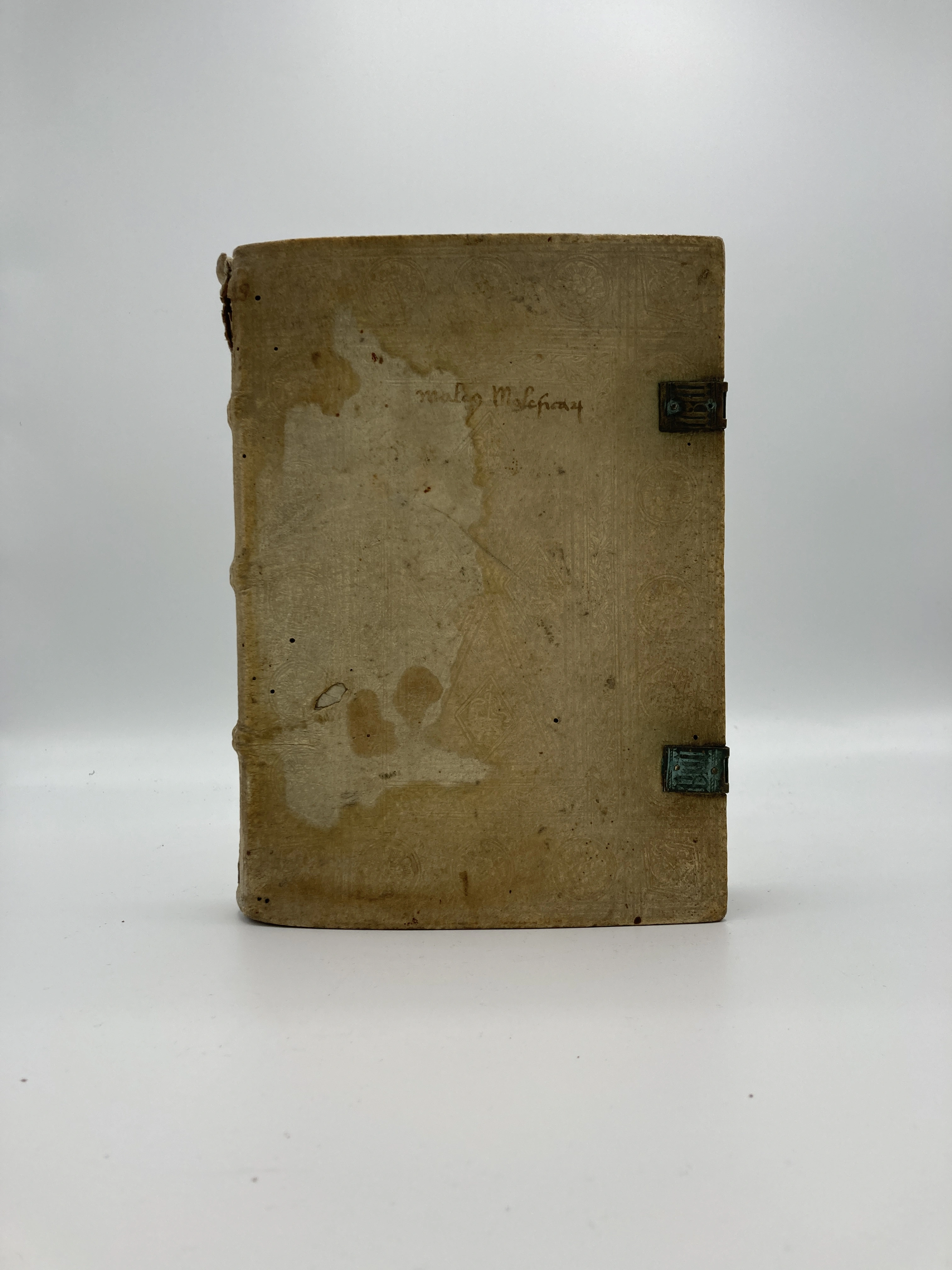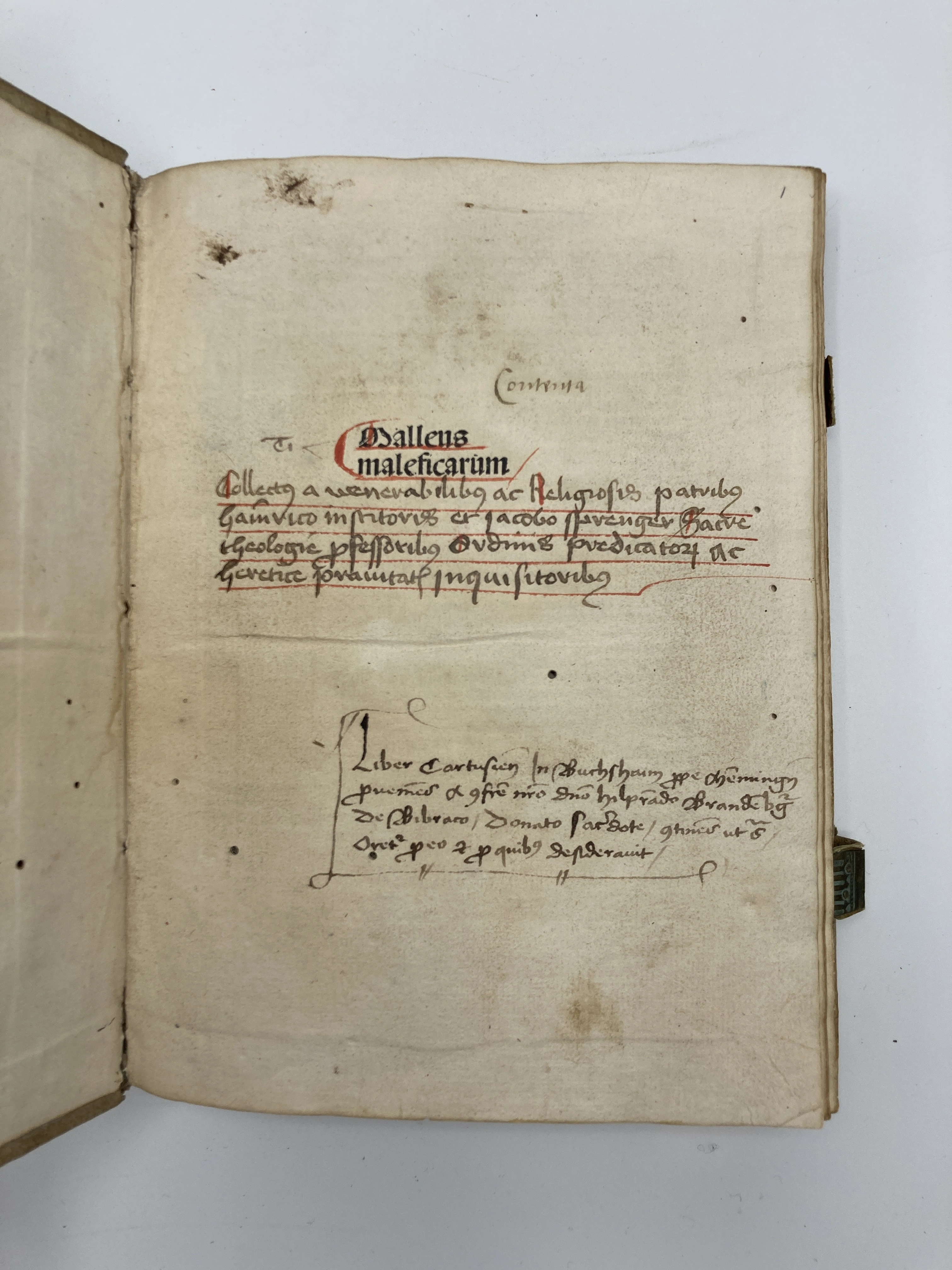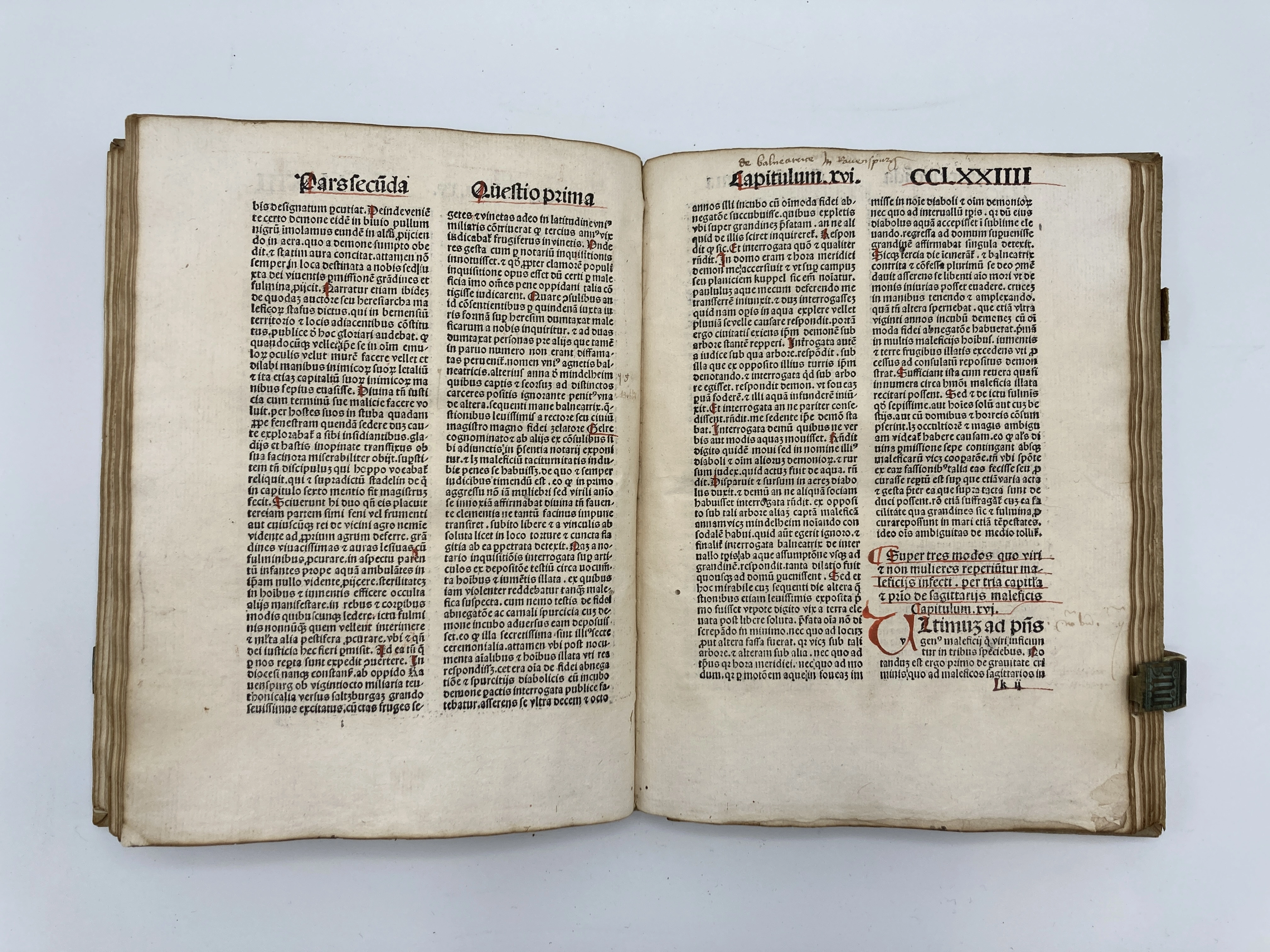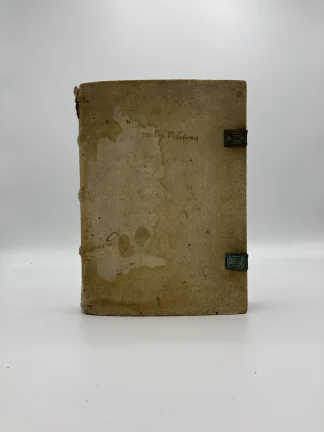KRAMER, Heinrich
Malleus Maleficarum.
Nuremberg, Anton Koberger, 1494.£95,000.00
4to. a-q8, r10, [17] 137 numbered ll., final blank. Gothic letter, double column, 45 or 46 lines, rubricated initials, underlinings and embellishments in red throughout. Early mss. to t-p in two different hands: first recording ‘Henrico(?) Institoris’ (Heinrich Kramer) and ‘Iacobo Sprenger’ with their various titles as co-authors, and the record of gift from the Carthusians near ‘Chemmingen’ (Hemmingen), in Northern Germany, to a library near Brandenburg. Contemporary marginalia, pages untrimmed. Slight age yellowing and occasional light browning on some leaves, a few small wormholes, largely marginal, mainly on first and last leaves. A very good, clean, well-margined copy in contemporary blind-stamped pig skin over boards, title inked to upper cover and brass clasps (upper partially missing), vellum ms stubs. Light water staining to covers, worming to lower, upper compartment of spine cracked.
A splendid copy in original condition of an early edition of this first and radical handbook for the detection and destruction of witches, by the German Dominican inquisitor Heinrich Kramer (or Institor, 1430-1505) and possibly Jacob Sprenger (c.1436-1495), whose co-authorship is still debated. The ‘Hammer of Witches’ was first printed in 1487, shortly following the 1484 Summis desiderantes affectibus, a ‘famous bull on witchcraft’ by Pope Innocent VIII acknowledging its spread in Germany and authorising its extirpation. The document can be found at the beginning of this copy, following the author’s apologia. The present text became the canon for future secular witch trials, despite its rejection by contemporary inquisitors for its extremism. Overall, 28 editions were produced between 1487 and 1600 and it was used by Protestant and Catholic courts alike. The inclusion of a contents page reveals its purpose as a reference guide and the annotations are evidence of active usage. It laid the foundations for our modern understanding of witches and witchcraft and likely contributed to the sharp rise in witch trials in the coming centuries.
In keeping with the contemporary format of canon law and philosophical texts, the treatise is set out as a series of questions and answers, categorised into three distinct parts. ‘The first two […] deal with the reality of witchcraft as established by the Bible, etc., as well as its nature and the horrors in dealing with it, while the third lays down practical rules of procedure whether the trial be conducted in an ecclesiastical or secular court’ (Catholic Encyclopedia). Torture and deception are encouraged as a means to extract confessions. The work stands out as highly misogynistic, condemning witchcraft as worse than heresy, and highlighting female propensity to this type of activity, with fervent interest in the sexual aspects of demonic activity. Among those explored are the sexual relations of incubi and succubae, as well witches’ ability to convince men of the loss of their genitals.
A most important and influential text within the history of witchcraft in a particularly early edition.
ISTC: ii00166000 ; Catholic Encyclopedia Vol XV: p.676; BMC: IA. 7468; Thorndike: IV p.330; not in Gay, or Caillet, or Duveen, or Erdman.In stock





